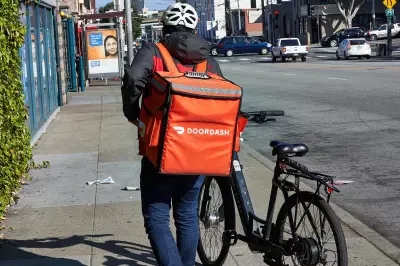What is Carding? How It Works and Prevention Methods
Table of Contents
- By Steven
- Published: May 06, 2024
- Last Updated: May 22, 2024
There are countless types of cyber attacks on the Internet, from threat actors lurking within vulnerable networks to phishing, social engineering, and brute force incidents. “Carding” is one of these attacks, where a criminal steals a victim’s card information and misuses it to their benefit; this may include purchasing untraceable gift cards or using the stolen information to buy and sell items online.

In 2023, over 426k cases of credit card fraud were reported to the FTC, with a portion of those cases directly relating to carding events. Carding incidents are becoming more prevalent than ever, and while protecting your credit card information is vital in avoiding credit card fraud, understanding how the schemes work is critical to preventing it.
This content provides information for identifying carding fraud, including how the process works, the methods used by attackers, and the broader implications for cybersecurity in the age of carding and the dark web.
What is Carding?
Carding methods can differ between schemes, but there are common denominators that separate these information attacks from others. For example, as the name implies, these activities involve malicious agents stealing or illegally acquiring debit, credit, and gift cards. After obtaining the sensitive card information, the criminal can use it to make unauthorized purchases, typically without leaving a trace.
Carding attacks don’t need all the information of a card or its owner to work; the threat actor only needs a few pieces to swing a scam, mainly when they target an e-commerce store to defraud. These threats could misuse any part of a card’s sensitive data, from the card holder’s name to the card number, the verification code, the expiration date, the billing address, or the owner’s ZIP code.
How Does Carding Work?
Here is the process of how carding work:
Obtain Credit/Debit Card Information
A carding attack begins with a threat actor obtaining card information and identifying their potential targets. They can obtain card information in many ways, from finding what they need in physical trash to purchasing the information following a data leak on the dark web. Some scammers can garner the necessary credentials by using manipulative social engineering attacks, but many avoid this route as it requires “getting close” to their victim.
After gathering the essential data, they begin looking for potential targets to defraud. Most commonly, these are e-commerce stores and businesses with weak fraud prevention. Organizations with limited identity theft measures are often targeted for cyber schemes, particularly when they don’t require identity verification to make purchases.
Validate Card Data
Once they have a card’s information and a potential target, the threat actor must verify their info is valid and estimate the spending limits of the card’s account. They can verify card data in many ways; however, if their potential victim has account notifications set up, they may be quickly discovered. Consequently, where some threats may make small $1 purchases to test the validity of a card, others choose another path; with enough basic information about someone, they can impersonate their victim—then call the card’s provider for “account assistance,” claiming things like they’ve forgotten their PIN or want to check a fraudulent charge.
Checking the spending limits of a card is more complicated because most financial providers will notify the account holder of any suspicious spending. To get around these issues, a threat actor might commit the scam by making many purchases at once, draining the card’s account, or manipulating their victim into sharing the spending limit through friendly conversation.
Drop Shipping
Depending on the scammer’s ultimate goal, they might use a go-between to ship items; this allows them to avoid further detection, as the middleman would appear in the card’s statement instead of a company name that may raise suspicions. Alternatively, scammers could use a middleman service to check the validity of a card through “card not present” transactions. These purchases may appear in a card’s purchase log but are often attributed to mobile games or cyber services like cloud storage.
Make the Purchase
If the threat actor is looking to make more profits than the card can provide, they may make unauthorized purchases and transactions; these purchases are often for high-value items, allowing them to be easily resold without attaching fraudulent activities to the criminal. Moreover, organizations that allow purchases without additional identity verification perpetuate this practice, as the criminal only needs the card information they have rather than needing secondary and tertiary credentials they likely don’t have.
Keep or Resell the Goods
In the cases where a malicious actor purchases goods, they have to decide whether to keep the purchases or to sell them. Usually, these goods are kept until the criminal decides it’s “safe” for them to sell, but some actors may keep the purchases. Moreover, because of the growing self-regulated marketplaces online, it can be nearly impossible to discern authentic goods from the fraudulently obtained—which hurts consumers, organizations, and cardholders simultaneously.
What are the Most Common Carding Attacks?
Here are the most common carding attacks that you should know about:
Phishing
Phishing is among the most prevalent ways malicious characters obtain information; the term refers to a fraudster manipulating a potential victim into sharing personal and financial information, although how they achieve this can differ. Phishing can take many forms, from one-shot texts or emails to targeted conversations, luring unsuspecting individuals into a lion’s den. Other schemes may involve creating relationships with potential victims or misleading them with fake websites, log-in pages, or social media communities.
Identity Theft
Carding is one of the many types of identity theft, in which another person’s information is used fraudulently to obtain credit, goods, and other benefits. It is a nuanced type of identity theft, as it doesn’t necessarily require “personal” information outside of data that may already be public. Moreover, unless an organization implements identity-based security measures, it can be nearly impossible to stop fraudulent purchases from being completed.
Card Skimming
Debit and credit card skimming is another common way for threat actors to obtain the necessary credentials. These attacks allow someone to capture the details of a card from a point-of-sale system or other card-necessary device like an ATM or gas pump. They are typically mag-strip based and require the potential victim to swipe their card to record the card details. Because of card skimming schemes, tap-based purchase options and PIN-necessary verifications are becoming more prominent in the states.
Social Engineering
Social engineering is similar to phishing but differs in how “close” a malicious actor may be to their potential victim. Phishing attacks do not necessarily require a relationship to be efficient, but social engineering attacks may benefit from a relationship with the victim. These attacks can include appeals to emotion, empathy, love, fear, or any other connecting relationship between the potential victim and their scammer. Some social engineering attacks don’t require the victim and the malicious actor to meet—the scheme can play out through others being grossly manipulated.
How to Prevent Carding Through the Dark Web
To prevent carding through the dark web, there are a few important points to keep in mind:
Secure online transactions and personal information.
The onus for protecting personal and financial information is split between the data owner and the organizations that maintain the data. Both parties are interested in keeping the information safe, and the most efficient way to achieve this security is by working together. In the case of carding attacks, organizations should strive to implement secure online transaction processes, including non-optional multi-factor authentication gates. Requiring additional identity verification throughout a transaction limits the chances of a rogue actor misusing another person’s information.
Educate others about phishing scams and secure browsing practices.
Of course, consumers play essential roles in preventing these schemes, too. An estimated 56% of adults in the states have reported being unable to discern the difference between authentic information and fake—with the most significant factors being their experience and knowledge of potential threats. Consequently, when users learn about the potential scams and threats online, they become more aware of the environment. The entire community benefits when sharing that information because users can better identify and prevent others from falling victim to online scams and threats.
Anomalous Activity Monitoring
Organizations can also help prevent threat actor activities using anomalous monitoring within their systems. Monitoring for unusual transaction patterns allows preventative measures to be implemented, which helps detect and prevent malicious activity with consumer information. For example, by monitoring activities such as purchases, when suspicious behavior begins—like a sharp spike in purchasing goods—IT experts are tipped off that something strange is happening. They can launch an investigation, cancel the transactions, or release other defensive precautions, or remove information deemed compromised.
OWASP Countermeasures
A valuable resource for web application and service developers, the Open Web Application Security Project offers many solutions and guidelines for protecting individuals from carding attacks. Because the project is open source, many organizations benefit from learning about the risks online environments pose. Developers can do application testing with manual or automated tools, including everything from cross-site scripting to malicious file execution and response.
Banking Industry Measures
The banking sector implements many protocols and technologies to combat carding fraud, from fraud prevention scamming to blanket protection tools. Often, many tools work together to catch potential threats, and while the details for each institution are nuanced, they are robust enough to catch and remove most threat activity. When carding is concerned, banks can sometimes stop a threat actor from draining an account, but only if the card holder’s activity is out of character.
What is the Dark Web?
Almost everyone who frequents the Internet knows the dark web or “darknet,” although how much a person knows about it differs significantly. Simply put, the dark web is a section of the Internet that sits outside the reach of traditional access methods. There are no links to the web on any of the big search engines, but plenty of threat actors use it for malicious activities. It is attractive to these agents because it allows for transactions and interactions outside the normal activities a user might find. For this reason, fraudulent behaviors and information are significant staples of the environment.
The Carding Ecosystem on the Dark Web
The information that leads to carding attacks is a common commodity on the dark web. Entire marketplaces are dedicated to the movement and trafficking of such data, particularly on high-interest carding forums. Some of these forums sell more than card credentials, however. They can sell entire portfolios about a person or a target group, including personal data like government identifiers and other accounts. The more complete a person’s record is on the dark web, the more likely malicious groups will misuse their information, be it weeks from exposure or years later.
Law Enforcement and Countermeasures

Challenges in Combating Carding and Dark Web Crimes
Although authorities know a lot about the dark web, they face challenges when attempting to combat criminal activities like carding on it. For example, the dark web operates slightly differently than the surface web we all use—it offers more anonymity and encryption protections, which make backtracing some users essentially impossible. Moreover, it’s not enough to deem those using it malicious because a user might enter it for various reasons, from exploring to authentic purchases on niche markets.
Strategies Used by Law Enforcement Agencies
Despite the abovementioned issues, many law enforcement agencies fight against the growing wave of malicious actors on the dark web. Law enforcement may use cyber patrols or undercover operations to pinpoint threat actors; either way, while the authorities are doing their part, consumers and organizations have the onus of protecting sensitive data associated with them.
Carding is an identity theft created when a threat actor obtains and uses another person’s debit, credit, or gift card without permission. Carding scams can happen in many ways but usually start with the threat actor obtaining stolen information to purchase goods to sell later. Carding can be prevented, however. If consumers work to protect their information, and organizations put resources into protecting the data they collect, these schemes would be significantly mitigated—even if that information appears on the dark web years from now














